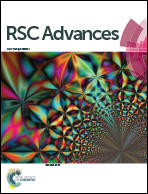EMI shielding of MWCNT/ABS nanocomposites in contrast to graphite/ABS composites and MWCNT/PS nanocomposites
Abstract
Acrylonitrile–butadiene–styrene (ABS) nanocomposites filled with multiwall carbon nanotubes (MWCNTs) are prepared through localized conductive patterning, using dry powder tumble mixing succeeded by hot compression technique. Electrical conductivity and complex permittivity together with electromagnetic interference shielding effectiveness (SE) are investigated in 8–12 GHz frequency range. Abrupt increase in dc conductivity by number of orders of magnitude on addition of 5 × 10−4 volume fractions of MWCNTs marked as percolation threshold, has adequately described the conductivity behavior with statistical parameters of percolation and GEM models. The SE of these nanocomposites increases with increase of MWCNTs content. SE ∼ 1 dB at 12 GHz produced with 0.05 wt% MWCNTs grows to ∼40 dB on addition of 5 wt% MWCNTs. SE exhibit marginal dependence or even independence on frequency for most of the compositions with 0–5 wt% MWCNTs. SE reflection (SEref) and absorption (SEabs) both are increasing with the rise of MWCNTs content. However increase in SEabs is faster than SEref in addition to its dominance. Complex dielectric constants in 8–12 GHz frequency range have been calculated by means of S11/S12 parameters using Nicolson Ross Weir algorithm. The variation of the SE as a function of dc conductivity which has rarely been examined in literature, investigated and compared with other polymer composites here.


 Please wait while we load your content...
Please wait while we load your content...